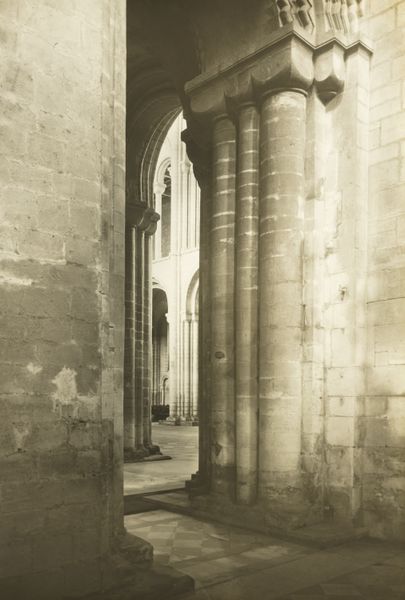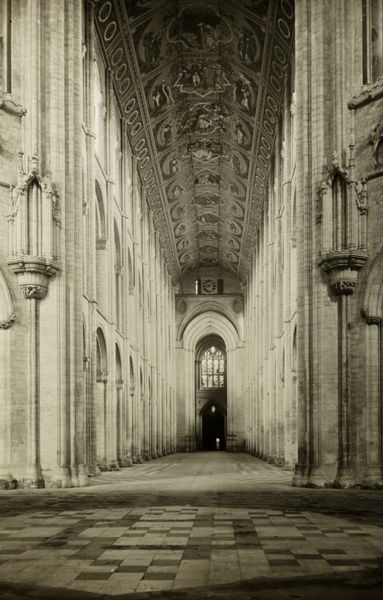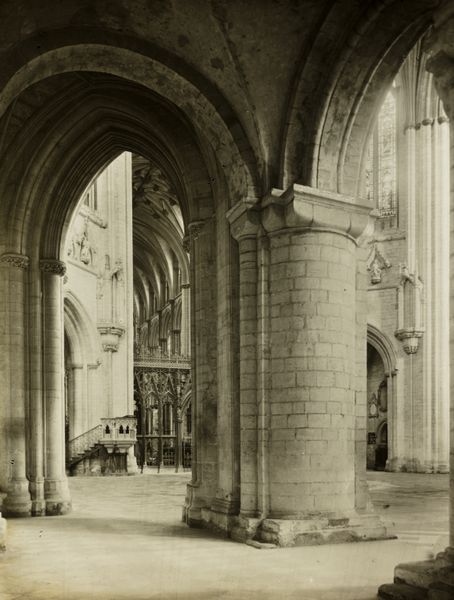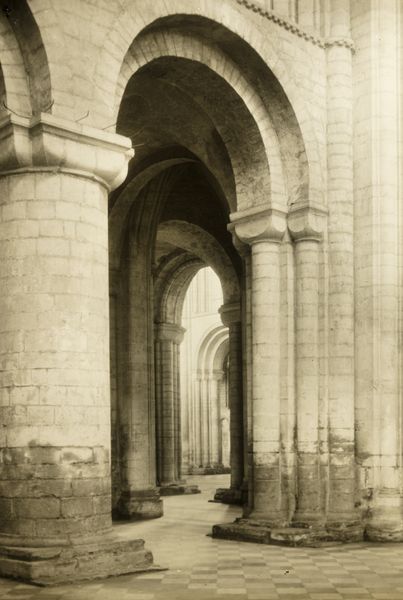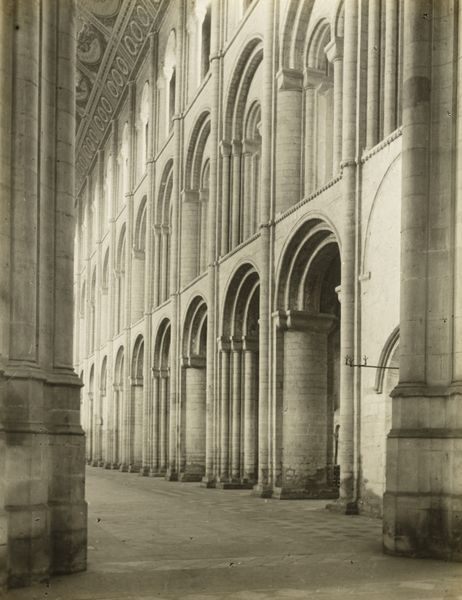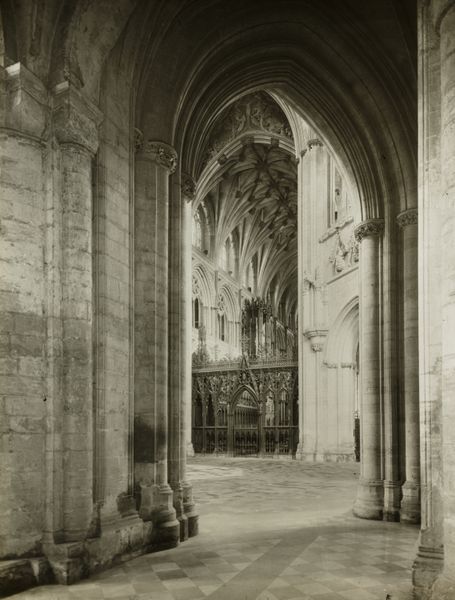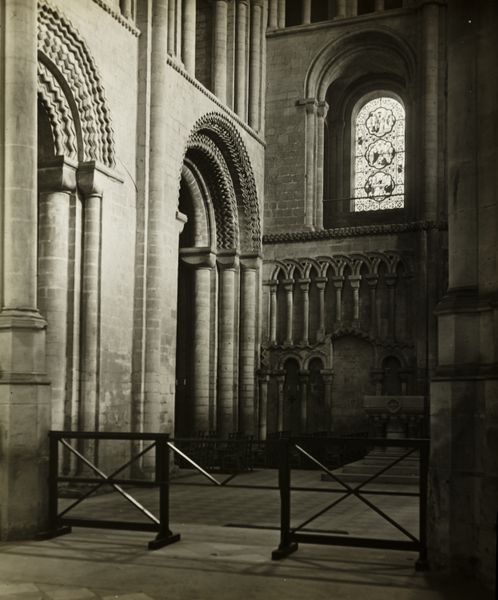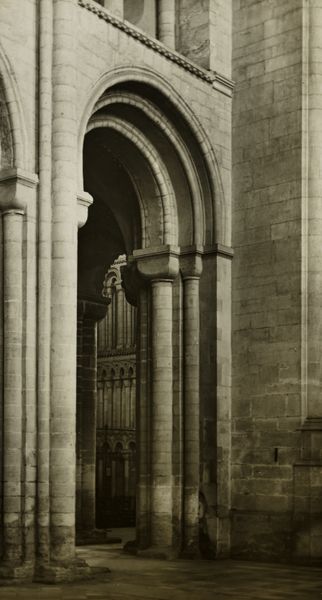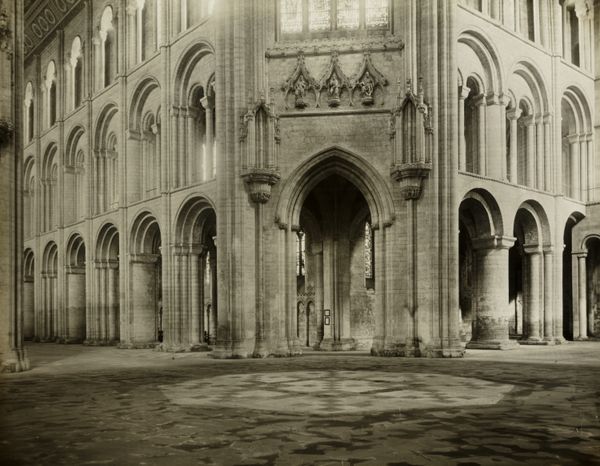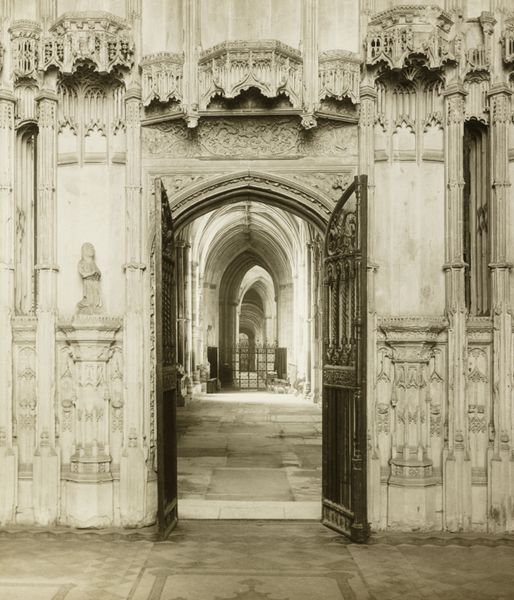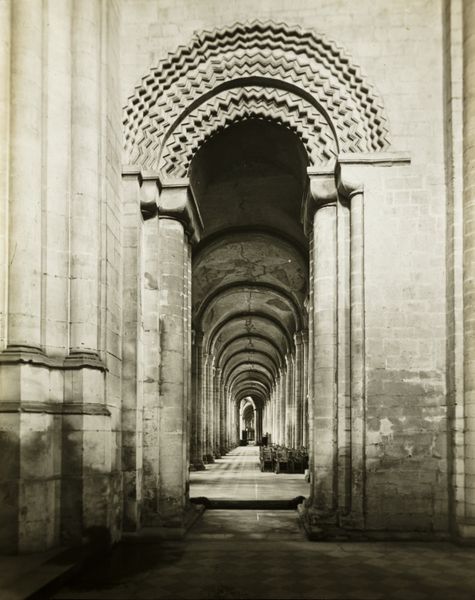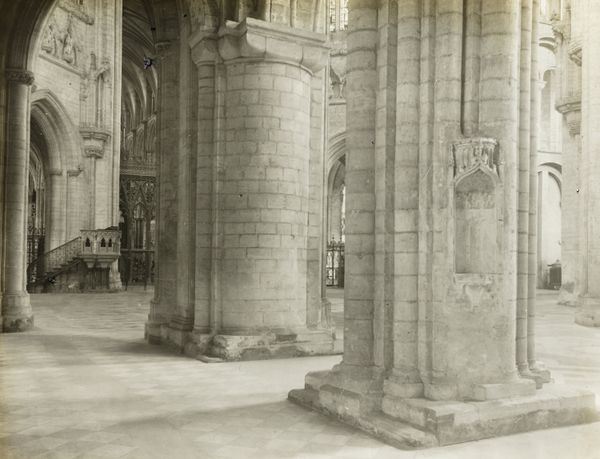
print, photography, glass, architecture
#
medieval
#
pictorialism
# print
#
landscape
#
historic architecture
#
photography
#
glass
#
geometric
#
england
#
geometric-abstraction
#
19th century
#
architecture
#
historical building
Dimensions: 8.2 × 8.2 cm
Copyright: Public Domain
Editor: This is Frederick Evans’s “Ely Cathedral: North Aisle to East,” a platinum print from 1891. The overwhelming feeling I get is one of immense scale and perhaps even… humble insignificance. What do you see in this piece? Curator: This image transcends a mere depiction of architecture. Evans captures the cathedral not just as a space, but as a testament to power structures – both religious and social. Look at the repetition of the arches; they visually reinforce a hierarchy that positions individuals within a grand, predetermined order. Editor: I see what you mean about hierarchy. But it feels… almost democratic in its endless repetition? Everyone gets the same arch, so to speak. Curator: That's an interesting observation, but consider: who had access to these spaces and the power they represented? Was it truly democratic, or a carefully constructed illusion that normalized social stratifications? Think about gender too. Were women granted the same access and influence within this architectural space as men? Editor: Hmm, that’s something I hadn’t considered. So the beauty of the architecture almost serves to mask underlying power dynamics? Curator: Exactly. Evans’s technique, rooted in pictorialism, romanticizes the scene. We need to delve deeper. How does this idealized portrayal reinforce certain narratives about the past, potentially obscuring more complicated or even oppressive realities for marginalized groups? The architecture stands but who benefited from it, and who was excluded? Editor: This makes me rethink how I initially viewed the piece. It’s not just a pretty picture of a cathedral; it's a loaded representation of historical and social power. Curator: Precisely! By engaging with these questions, we can challenge dominant historical narratives and understand how architectural spaces both reflect and perpetuate societal inequalities.
Comments
No comments
Be the first to comment and join the conversation on the ultimate creative platform.
